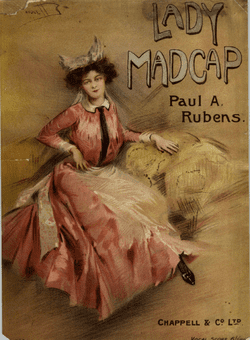 | ||
5inch gauge hunslet lady madcap
Lady Madcap is an Edwardian musical comedy in two acts, composed by Paul Rubens with a book by Paul Rubens and Nathaniel Newnham-Davis, and lyrics by Paul Rubens and Percy Greenbank. The story concerns a mischievous Earl's daughter who holds a ball at her father's castle without permission, pretends to be her own maid, and causes general confusion.
Contents
- 5inch gauge hunslet lady madcap
- Donkey pump of 5inch gauge lady madcap
- Synopsis
- Roles and original cast
- Musical numbers
- Reception
- In popular culture
- References
The musical was first performed at the Prince of Wales Theatre, London, on 17 December 1904, under the management of George Edwardes, garnering highly favourable reviews. It ran for 354 performances, nearly a year, closing in November 1905. It starred Adrienne Augarde in the title role, and G. P. Huntley as Trouper Smith. Various changes were made to the cast during the run. Among those who appeared in the piece were Zena Dare, Lily Elsie, Gabrielle Ray and Marie Studholme. It then toured in the British provinces, starring Studholme.
In 1906 it ran on Broadway at the Casino Theatre as My Lady's Maid with Madge Crichton in the title role. It also received an Australian production.
Donkey pump of 5inch gauge lady madcap
Synopsis
Lady Betty, the daughter of an Earl, Lord Framlingham, is an innocent-looking but mischievous girl. Without her father's knowledge, she has invited the officers of the East Anglian Hussars to their home, Egbert Castle, for a day and night of entertainment. She forges two telegrams that send her father into town on some urgent political pretext and later his butler to follow him. Her father wisely locks her in her room during his absence, but her friend, Gwenny, and lady's maid, Susan, secures a ladder to help her to escape from the window.
Although she detests wealth, Lady Betty is interested in a rich, eccentric young trooper, who calls himself Smith, and whose prowess at cricket have caught her eye. She disguises herself as a servant, and has Gwenny impersonate her, so that she can get close to Smith. Meanwhile, two men from the village, attracted by the Earl's advertisement for a rich man to court his daughter, arrive at the castle and mistake each of Gwenny and Susan for Lady Betty; they are both impostors pretending to be wealthy. Betty flirts with Smith and persuades him to pretend to be the butler, which he does, donning the butler's uniform.
That evening at the servants' ball, class distinctions disappear, as the officers enjoy the entertainment and company of servants and gentry alike. Betty continues her flirtations with Smith and is well-pleased with the progress of her elaborate mischief. Lord Framingham returns angrily but is soothed that his daughter's suitor is, at least, rich. The impostors are discovered, and all ends happily.
Roles and original cast
Musical numbers
Reception
Reviewing the first night, the critic in The Observer commented that the piece was "a conspicuous success" and "fully up to the high standard we have been led to expect" from musical comedies presented by George Edwardes. There was praise for Rubens's music – "a high level of excellence" above the normal standard for the genre. The reviewer for The Times praised all the cast, singling out Adrienne Augarde as "a bright and mischievous Madcap", but commented that the main attraction for audiences was G. P. Huntley, for his comic performance in various disguises.
In popular culture
The lyric of the song "I like you in velvet" was used by Malcolm McLaren in his song (on the same title) on his album Waltz Darling.
